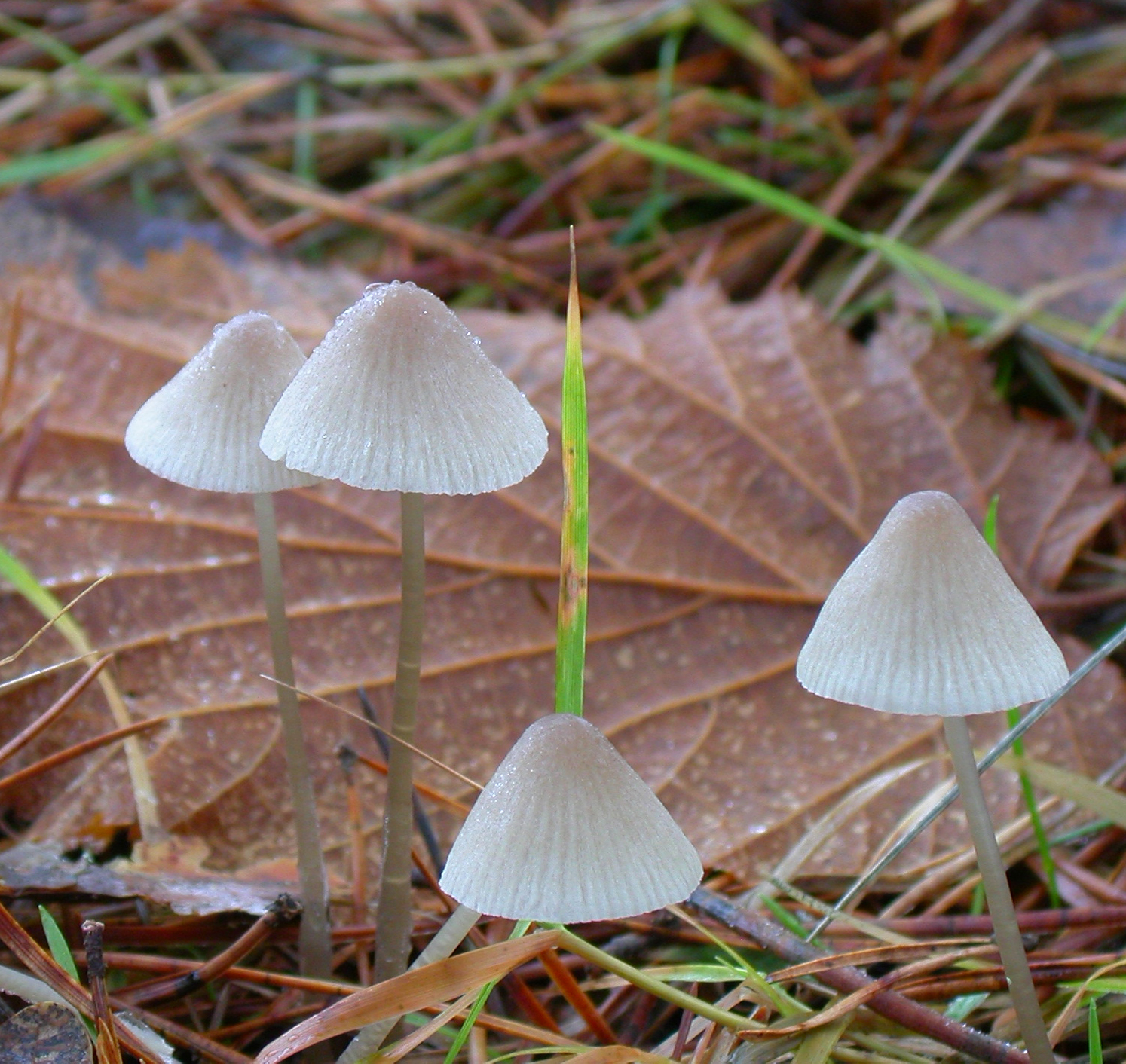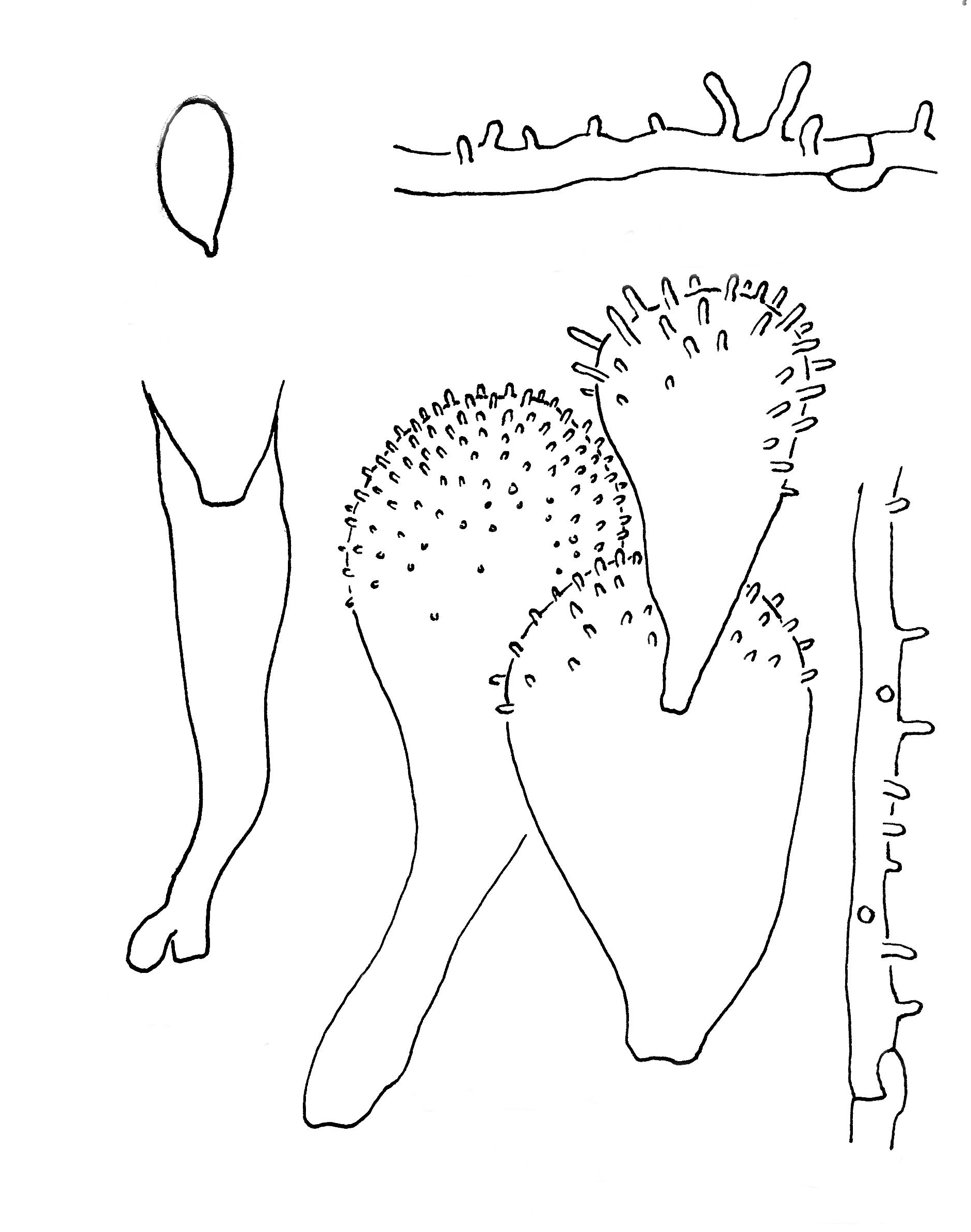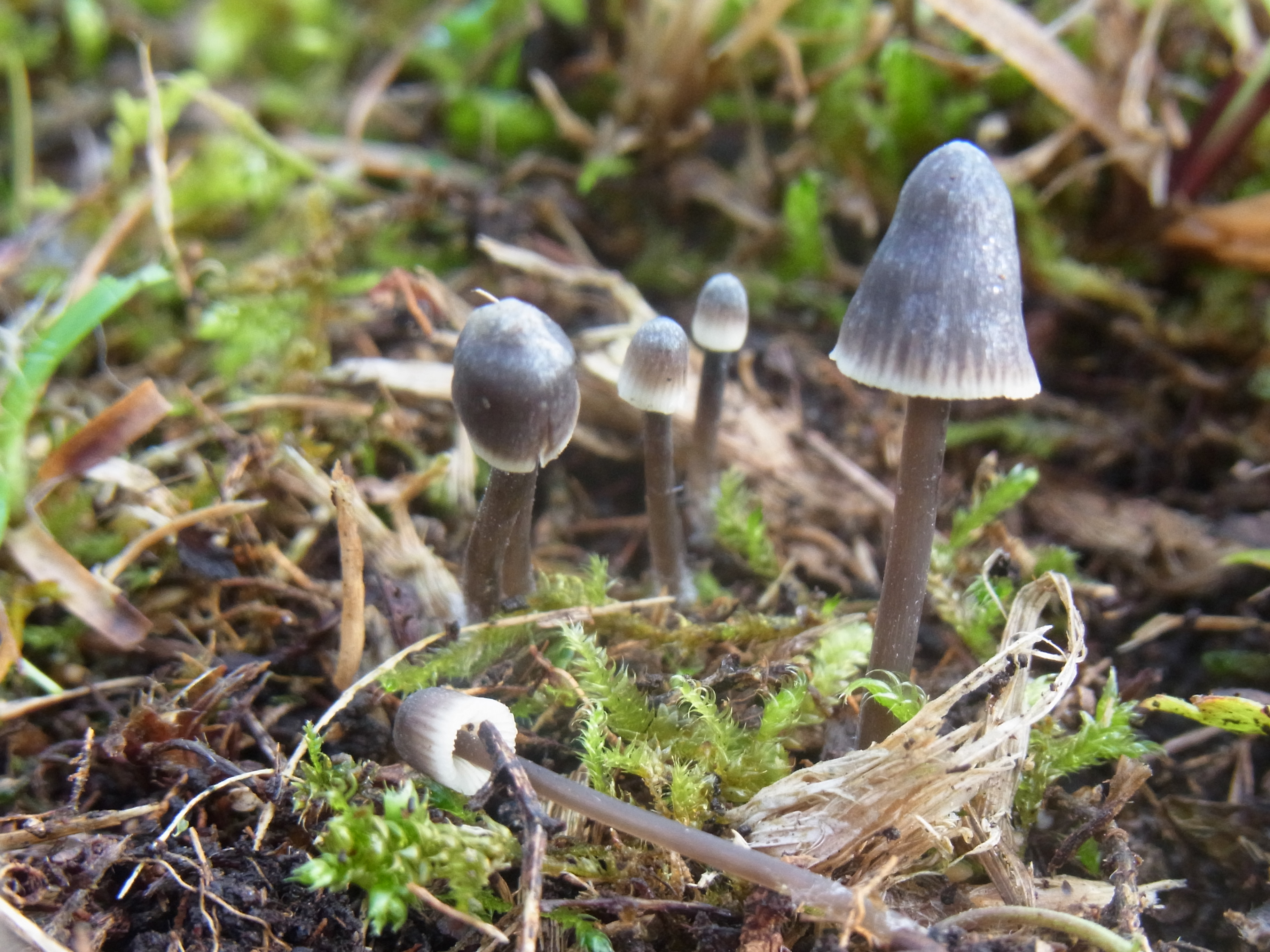Mycena metata
Mycena metata
Description
Spore, Hypha of the pileipellis, cheilocystidia, and hypha of the cortical layer of the stem.
Cap 5-25 mm across, narrowly to broadly conical or campanulate, sulcate, translucent-striate, pruinose, glabrescent, fairly dark brown to pale brown or greyish brown, darker and often with a pink shade at the centre. Gills 13-24 reaching the stem, adnexed, white to pale grey, often turning pale brownish flesh-colour to dingy pink. Stem 25-90 x 1-2 mm, cylindrical, equal, fragile, pruinose, glabrescent, whitish or grey to grey-brown, usually darker in lower parts, the base densely covered with long, white fibrils. Odour of iodine when drying (best experienced after having been kept in a box for a while). Basidia 24-35 x 7-10 µm, clavate, 2- or 4-spored. Spores 8-12.5(-14.5) x 5-6.3 µm (2-spored) or 8.5-11.8 x 4.5-6.5 µm (4-spored), Q = xx, pip-shaped, amyloid. Cheilocystidia 18-76 x 9-27 µm, forming a sterile band, cylindrical, clavate, obpyriform, obovoid, spheropenduculate, or less frequently somewhat irregularly shaped, mostly stipitate (but sometimes sessile), covered with mostly evenly spaced warts or straight to curved or flexuous, cylindrical excrescences up to 12.5 µm long. Pleurocystidia similar. Lamellar trama dextrinoid. Hyphae of the pileipellis 2-5.5 µm wide, diverticulate, covered with simple to branched excrescences, often forming dense, coralloid masses. Hyphae of the cortical layer of the stem 2-4.5 µm wide, diverticulate, with excrescences 1-10 x 1-2 µm, terminal cells absent or rare. Clamps present in all tissues, both in 2- and 4-spored form.
Ecology and distribution
In groups in mossy lawns, under both conifers (mostly Picea) and deciduous trees, on fallen twigs and other vegetable debrise. Often very numerous on needle beds. Summer to late autumn. Very common. Widely distributed. Also in alpine sites.


